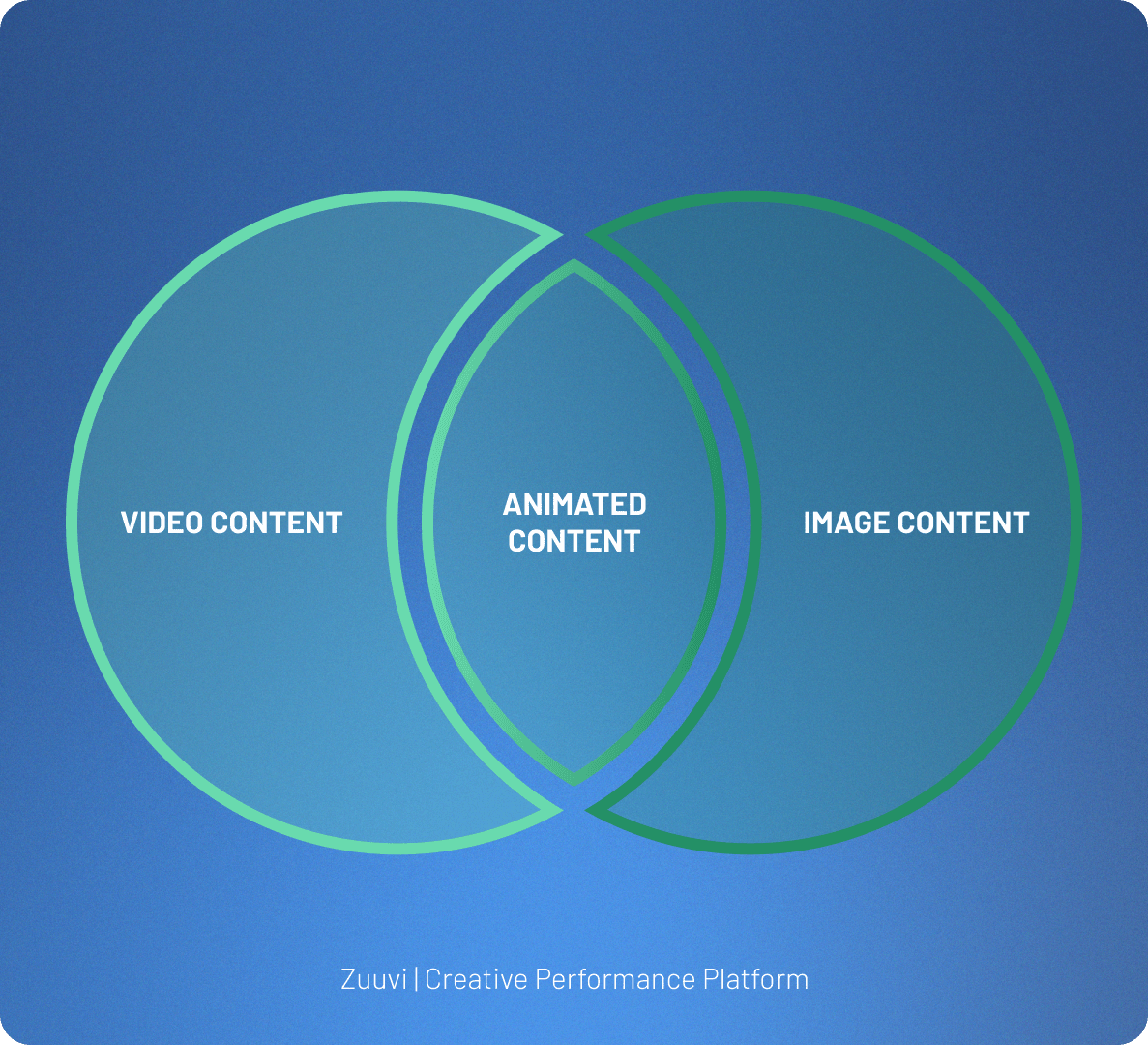What is a Creative Performance Platform?
Maintaining Creative Freshness in Your Marketing Campaigns
We live in a scroll, swipe & skip content world, where standing out is essential. And the key to grabbing (and keeping) attention is Creative Freshness.
Creative Freshness isn’t just a design principle. It’s a performance driver. When your ads are consistently engaging and evolving, they do more than look good - they convert.
What Creative Freshness is and Why It Matters
We’re exposed to thousands of ads every day - and most of them don’t stick. Why? Because we’ve either seen them a dozen times before, or they simply blend in with everything else.
That’s where Creative Freshness makes the difference. Creative Freshness means - you guessed it - keeping your creatives fresh. The best way to do this is through rotating slightly different ad content regurlarly. This is achieved by creating a number of variations of the content used for an ad campaign, and automatically keeping each variation live for only a few weeks at most before the variation goes to the back of the rotation.
Fresh (yes, reused content can be considered fresh) creatives catch the eye by offering something new in a sea of sameness. They hold attention longer, as variety keeps audiences engaged and curious.
By preventing repetition, they help combat ad fatigue - because once boredom sets in, your engagement is guaranteed to disappear. Freshness also boosts performance by encouraging testing of new formats and messaging, often leading to better results. Most importantly, it signals that your brand is not only relevant, but actively evolving and tuned in to the world around it.
Meta is Helping You Stay Fresh
Meta knows just how critical creative is to performance. In fact, their own research shows that 70% of campaign ROI can be attributed directly to the quality of your creative.
To help marketers stay on track, Meta recently launched two handy built-in reports:
1. Creative Freshness
A week-by-week breakdown showing how many new creatives you launch. And there is reasoning behind this breakdown. According to Meta, adding new creatives to your ad set rotation regularly may prevent creative fatigue and lower cost per result.
We’ve seen it in action: brands that consistently launch and test content weekly perform far better than those that don’t.

2. Creative Mix
A visual split of your content types - how much is video, how much is static image.
There’s no universal rule for what your split should be. It depends on your product, message, and audience. But one thing is clear: you need both. Videos are great for storytelling, emotion, and rich placements. Images deliver simplicity and speed. The trick is in balancing them well.
Stay Fresh with Creative Performance Platforms
Keeping your creative fresh doesn’t have to mean more stress or more manual work. That’s where Creative Performance Platforms enter the frame. These tools are built to take the heavy lifting out of ad production letting you focus on the big ideas and keep testing, learning, and improving.
With a platform like Zuuvi, you can automate repetitive tasks like resizing and versioning, collaborate seamlessly across teams, and use real-time data to spot when your creatives are starting to fatigue. It lets you launch fresh content faster, experiment with new formats, and maintain brand consistency at scale - without slowing down.
In short: Zuuvi helps you scale Creative Freshness without scaling your workload.
How Often Should You Refresh Your Creatives?
There’s no one-size-fits-all answer.
But if you twisted my arm for an answer, I would give you the following rule of thumb.
For display ads, aim to refresh your content every 4-6 weeks - and by that, I'm not asking you to produce new campaigns every month. Just tweak your content, messaging or overall feel of your ads, to maintain the highest possible interest (and through that, engagement) from your target audience.
For social media, you should act quicker.
Considering the fact that we're scrolling an immense amount of content on our social media each and every day, you should update your social media ad content at least every 2-3 weeks. That's the only reliable way to prevent ad fatigue.
For Meta - a platform with high content velocity - launching fresh creatives every week is a strong best practice.
On the bright side that means that after just a few months, your ad rotation will be big enough to never be the cause of ad fatigue.
Strategies for Staying Fresh Without Burning Out
Refreshing creatives doesn’t mean starting from scratch. It can be slight changes to existing creatives, or minor tweaks that gives your content a renewed feel - even reusing older content. In any case, you must be smart about how you ensure creative freshness - otherwise it can prove to be a time-consuming task!
A/B Test EVERYTHING.
Even the smallest tweaks can result in big lifts in performance. Test away.
Diversify Formats
Mix video with animated and even static content to diversify your content.
Ride the Trend Wave
Tap into what works and what doesn't regarding content. Stay up to date.
Optimise Content
Users on different channels have different preferences. Accommodate your audiences.
Creative Freshness Powered by Insight
To keep your creative relevant, monitor performance indicators that reveal when freshness is fading:
-
CTR – A drop may signal visual fatigue.
-
Engagement Rate – Declining interactions means it's time to remix.
-
Conversion Rate – Freshness feeds funnel movement.
-
CPA – Higher costs could mean your ads are losing their punch.
Meta’s new dashboards give you a clear signal when it’s time to refresh—not based on gut feeling, but on cold, hard data.
TL;DR – Creative Freshness in a Nutshell
Creative Freshness keeps your campaigns relevant and effective. Refresh your ads regularly—weekly on Meta, and every 2–6 weeks elsewhere - and use a smart mix of formats like video and images.
Track performance metrics to spot dips early, and balance fresh ideas with brand consistency. It’s not about starting from scratch each time, but about reusing and tweaking what already works.
With Creative Performance Platforms like Zuuvi, you can automate, scale, and optimise your creative workflow—making it easier to stay fresh without adding more to your plate.
Tags:

05.5.2025



